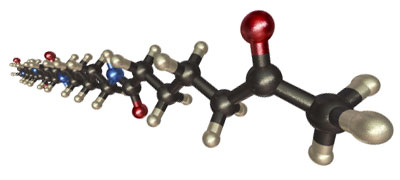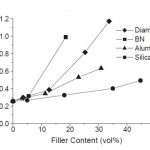I trust all are staying safe and making the best of the current COVID-19 situation. I am based in California and am on mandatory stay-at-home orders. I saw an interesting article come into my inbox this week from the Wall Street Journal. That be said, it was an editorial, but it got me thinking. The premise of the article is that the ban on plastic bags may have backfired. ... [Click to Continue...]
Thermal Interface Materials Part Four: How to Achieve High Thermal Conductivity
The last post showed how fillers play an important role in the development of thermal conductivity. The filler volume percent is a key parameter as shown in the figure on the left. To complete the discussion, two other characteristics need to be presented. The first is the concept of the percolation threshold and the second in the particle morphology. We touched on ... [Click to Continue...]
Thermal Interface Materials, Part Three: How to Achieve Increased Thermal Conductivity
The two previous posts in this series provided an introduction to thermal interface materials (TIM) and a description of why TIM’s are used to facilitate heat transfer across tow surfaces. This post will cover two types of thermal interface materials: Thermally conductive and electrically conductive Thermally conductive and electrically insulating There are many ... [Click to Continue...]
Thermal Interface Materials Part Two: Why Use a Thermal Interface Material?
This post will discuss the rationale for using thermal interface materials. The question is: why would someone go to through the effort to put a thermal interface material (TIM) between two surfaces? To answer the question, let’s take a closer look at the interface between two surfaces. Figure 1 shows a schematic of two typical surfaces when placed in close ... [Click to Continue...]
Seasons Greetings
Best Wishes for a prosperous and Happy New Year! We will be back in January with the continuation of the series on Thermal Interface Materials Our next series will be on plastics recycling, ocean plastics, and a discussion of the facts and myths (there are many!). ... [Click to Continue...]




